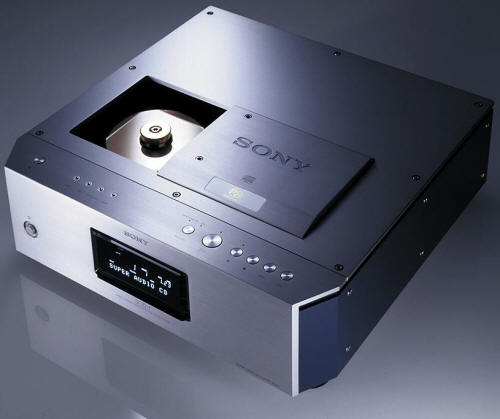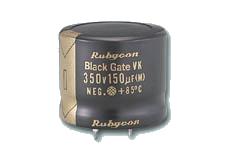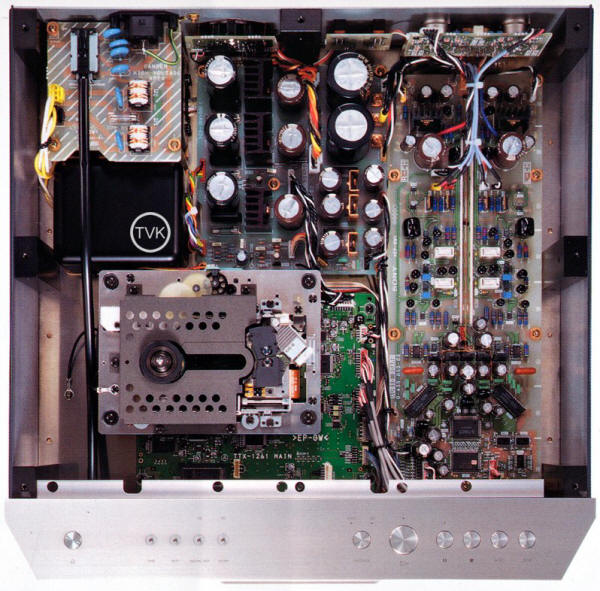You are reading the older HTML site
Positive Feedback ISSUE
march/april 2008
Kennedy On Audio - Orphans No More: Former Darlings
of the High End (Or Modding the Sony SCD-1 and 777ES)
by Kevin Kennedy

Many of you who have read my more than somewhat sporadic byline over the years probably realize that like most of us, my hobby lives within definite financial constraints. No $12K CD players and $65K audio amplifiers for the likes of us. Yesterday's state-of-the-art component, once having lost its glamour, often represents a tremendous opportunity to those of us on real world budgets, and in many cases with selected upgrades can give the best of today's technology a good run for the money—and in most cases for just a small fraction of the price of admission for one of today's Stereophile Class A components.
Last time around I promised to talk about tweaking the older Sony SACD players—specifically, the SCD-1 and SCD-777ES. As you are doubtless aware, a huge industry has grown up around modifying these players for improved performance (and sometimes for a substantially larger cost than what the player may have originally sold for). Whether or not I could afford the price of admission to this elite club, I enjoy modifying older, now "orphaned" former state-of-the-art gear or less expensive new gear to enhance their performance. Obviously when modifying something I also have a wide range of more recent, better performing, and better sounding components (piece parts) to choose from than did the original manufacturer, who also usually had to target a specific retail selling point. In the area of semiconductor technology, the march of time has yielded some pretty significant improvements in op-amps in particular, and most analog ICs in general.
Given the excellent build quality of these Sony players (notwithstanding the funky mechanism issues), I suspect it is very unlikely that Sony made any money on these units at all. These were intended as statement products to promote the new format, and hence little expense was spared. The current replacement for these players costs nearly $12K, and, although I have no direct experience, I am told by those who do that the newer player does not have the performance potential (or indeed the baseline performance of the stock player) of the original player. I will share with you what I have done so far to enhance the player's performance. While some will take issue with what I have done for assaulting the Sony house sound (which I haven't really, preferring to build on its virtues), others will take me to task for not going far enough. I guess it is all in one's frame of reference. I have done reasonable and cost-effective modifications that respect the original design intent of the player and am very pleased with the results. Will I go further, undoubtedly....

Tweaking the Sony has revealed that the Zhaolu DAC I was previously so impressed with has substantial shortcomings, so much so that it went from being impressive in its own right to abruptly sounding broken. Parallel to the tweaks to the Sony, I have also been working on the Zhaolu, attempting to close the gap between it, the Sony, and a Benchmark DAC 1 which I was recently able to compare it to. The results of that odyssey will be chronicled in a companion article devoted to the Zhaolu specifically. The Zhaolu actually has a lot of potential, but some serious flaws in execution keep it from attaining the performance it is capable of. The latest surgery was quite successful and will be detailed in my next article.
I have also been participating in the Hi-Rez forum of the Audio Asylum, which has proved to be a very useful place to learn about the issues surrounding SACD playback and the sometimes difficult task of acquiring program material in this format. The good news lately seems to be that a significant amount of new material is being released in this format. For example, most of the recordings made by Dead Can Dance are being released on SACD in Japan in the very near future. I have several on order from CDJapan and will report on their sound quality when I do finally get them.
Buying SACDs online can be a bit of a challenge, particularly when the seller has no idea what an SACD actually is and has miscategorized another type of disk as an SACD. Perhaps not so surprisingly, this is a pretty major problem with the many sellers of used disks on Amazon and, oddly enough, much less of a problem on eBay, which even has a specific category for them.
While much material remains in print, there is also quite a bit that is no longer available, and for this I have to rely on used disk sellers. My biggest gripe with SACDs has more to do with the fact that the catalog remains quite limited compared to CDs, and many great recordings will never be reissued in this "new" format. Another more insidious issue is that there is quite a bit of material, particularly after the transition to digital started, that is not quite up to snuff for transfer to higher resolution formats like SACD—the same might also be said for some stuff recorded on early analog transistorized studio gear. The best sounding classical recordings I have are all DSD remasters of old analog master tapes made on tube recording gear. Interestingly enough, reissues of most of albums by the Police also sound excellent, but Elton John's "Madman Across the Water" has a dry, paper thin quality to the sound that is hard to describe.
I have identified the following SACD sellers as being quite excellent, based on repeated buying experience: CDPacific and Elusive Disc. CDJapan does not specialize in SACD, but often does offer pre-release sales of obscure recordings, and in quantity is quite cost-competitive with the few stateside options available. Acoustic Sounds is another good source of SACD, although I have yet to buy anything from them. There are other good options not detailed here. I wonder how many of you, like me, almost never set foot in a brick and mortar music store any longer?
The mods I have performed so far seem to have improved the overall level of resolution without substantially altering the character of the player. It's a little quicker, cleaner, a touch warmer, image height and depth are improved, and it is a bit quieter in the space between notes—what some refer to as the sense of blackness between notes—that is, nothing intruding or overhanging on the inner note silence.
Before you start any mods on this player, make sure you have the service manual readily available, as you will need it. AND MOST IMPORTANTLY, use a wrist strap and work in a static-free environment, as you will be removing components from the player and handling a board loaded with expensive and hard to replace cmos digital audio ICs. Work slowly and patiently. A few of the op-amps requiring replacement in this mod are smd types, and a small-tipped, temperature-controlled iron is required for their replacement. To remove soic-sized components like the op-amps used here, I generally cut the leads right at the body using an X-Acto knife, and then I use the iron to remove the leads one at a time. Follow up with "Soder Wick," and you will be ready to install the replacements. The rest of the components mercifully are through hole—unfortunately, the biggest gains seem to come from wholesale op-amp replacement.
Upgrades to the Clock/Clock Supply – Replace C327 with BG 100uF 25V FK. The stock regulator has output noise of 70uV over a 10kHz bandwidth, which probably needs further improvement. The cap choice was an effort to reduce noise on the clock supply. I am actually working on a very low noise regulator expressly for this application. The existing clock module is quite a good one and is very closely located to the DAC. Given the controversy surrounding clock mods and the relative lack of improvement I noted in my last SACD upgrade project, I will hold off on this one.
Regulator Row Cap Upgrade – Replace C111, C113, C211, and C213 with Black Gate FK type 100uF/25V. While you are about it, also replace C331 and C334, which provide local decoupling for the D/A converter. Changing these capacitors resulted in a surprising improvement in overall tonal balance.

Current Pulse Chip References – Replace C129 and C229 with BG 100uF 25V FK. Changing these capacitors was quite audible and was done in a mod prior to the regulator row cap upgrade.
Upgrading the Current Pulse CCS Design – Replace SOIC type IC107/207, which stock are AD712 with AD8512, which are significantly quieter and have very comparable dc accuracy. I used an X-Acto knife to carefully cut all of the leads and then unsoldered the leads from the pads.
Replace C307 with a BG 100uF 25V FK. In theory this will help lower output noise from the regulator used as a reference for these current sources.
Optional, but highly recommended, as this might be one of the most significant changes to the stock player; it does, however, require a minor etch cut to implement. Remove R111 and R211 and replace with combination of 110 and 402 ohm Caddock MK-132 resistors, install 402 resistors closest to the inverting inputs of op-amps IC107/207, and from the middle of the two resistors connect the + terminal of a Black Gate 100uF FK electrolytic. Connect the - terminal to the board star ground. I cut the etch and installed the 402 topside and the caps and 110 resistors on the bottom. Decoupling HF noise from the supply is the intention of this change.
Upgrading the I/V Converters – First remove resistors R112, R113, R212, R213, and IC102/202, and then install machined IC sockets in place of the ICs. (These are the only dips on the board.) Next install a set of closely matched 475 ohm Caddock MK-132 1% resistors, which should be matched to 0.1% or better, as this has a direct impact on cmrr in the "mixing" stage, as Sony refers to the diff amps following the I/V converter. Install a pair of LM4562NA dips. (These are faster and much more transparent parts across the board—I like these everywhere I ever tried them.)
There are several versions of the audio board. Very early ones can be identified by their lack of box caps just to the right of the I/V converters and the presence of LM6172 at IC102/202. Later players use different chips (BB2604) at these locations.
I recommend adding a 0.01 or 0.1uF Rel Multi-cap from pin 4 to 8 of each I/V converter IC to provide some local decoupling—the traces back to the low impedance power distribution buss are several inches long.

I suspect that the comments about harsh and glary sound in conjunction with these players related to units that originally had LM6172 installed in the I/V converter positions. I have never thought that this particular player sounded harsh or glary, so I was quite stunned when several experts at AA informed me that I was basically deaf for liking the stock player <grin>. I have learned to take all of these sorts of comments with a grain of salt, as Sony apparently did react to criticisms relating to the sound of early players and fixed the issue(s) in later units. Matters of system integration/compatibility never seem to be acknowledged in these posts either, as if everyone had exactly the same sort of system, and indeed listened for the same attributes.
Upgrading the "Mixing Amps," which are actually nothing more than standard Diff Amps – Remove and replace IC103 and IC203 with soic version of LM4562.
Replace R114-R117 and R214-R217 with very carefully matched 10K Caddock MK-132, which need to be matched to < 0.1% for good cmrr.
GIC Filter Circuitry Upgrades – So far I have made extremely limited changes to the circuitry in this area of the player. These circuits are basically gyrators which present a very high impedance to the audio path to something like 50kHz or so and above that start to strongly attenuate ultrasonic energy to prevent it from appearing at the outputs. I am skeptical that spending any money here will result in significant audible improvements, and the selected op-amps, given their high slew rate and bandwidth, are among the most suitable devices for this application. There are a couple of resistors that can be replaced with benefit:
Remove and replace R118 and R218 with Caddock 2K MK-132.
Remove and replace R119 and R219 with Caddock 1.8K MK-132.
I use the normal switch setting for the filters as opposed to the custom filter setting on the back panel. I am not sure why, but something makes me believe that it sounds better in the normal setting with my system. There is nothing I can put a finger on specifically; it is just a general impression.
Upgrading the Output Amp – Carefully and without damaging them, remove C122 and C222 and retain them, as they will be reinstalled after replacement of IC104 and IC204. Carefully remove these ICs and replace these AD712s with AD8512s. Reinstall C122 and C222 once you are sure the op-amps are oriented and soldered correctly. Slew rate, distortion, and noise performance all improve considerably in the AD8512 as compared to the AD712. I deliberately choose the AD8512 because of its excellent phase margins in the face of large phase shift-inducing capacitive loads specifically because there is a whole lot of high current and presumably fairly slow discrete buffer circuitry inside the feedback loop of this op-amp, and I wanted to ensure that the circuit remained stable under all conditions.
Some may want to try faster op-amps here, but I didn't due to a concern about overall high frequency stability.
AD OP-AMP NOTE: Note that these often are no longer marked with a dot at pin 1. Just be sure to orient them the same way as the original AD712.
Results: You might wonder at the results of all of these not so inexpensive mods. They definitely do take this player to a higher level. Some of the differences, based on what I heard with the stock player, relate mostly to a greater level of overall refinement in the sound, better imaging, additional low level detail, and a more neutral overall tonal balance. The player just seems to have more finesse. Eventually I do hope to be able to compare my modded player to one that has not been modified. I am relying completely on my initial impressions of the unmodded player and to comparison with the Zhaolu DAC on Redbook CD playback. Initially the two were very comparable. After the mods the Sony greatly outclassed the Zhaolu on Redbook CD, providing some evidence that these mods are worthwhile.
Materials:
AD8512AR/BR SOIC x 4 (output amplifiers and current source amps)
LM4562NA x 2 (I/V converter amps)
LM4562MA SOIC x 2 (mixing amps)
4 x Caddock MK-132 470Ω 1% matched to 0.1% or better
2 x Caddock MK-132 1.82KΩ 1%
2 x Caddock MK-132 2.0KΩ 1%
8 x Caddock MK-132 10.0KΩ 1% matched to 0.1% or better
2 x Caddock MK-132 402Ω 1% matched to 0.1% or better
2 x Caddock MK-132 110Ω 1% matched to 0.1% or better
Black Gate FK or Standard Grade 11 x 100uF/25V C111, C113, C129, C211, C213, C229, C307, C331, C334, plus two for the Current Pulse Current Sources if upgraded.
There are still a number of the original Silmic caps in the player yet to be replaced. Once I have done so, I will provide further updates.
Other mods are contemplated, but not fully knowing what I will do next, I will hold off on speculation for now.
Now go have fun tweaking your player! See you next time.
